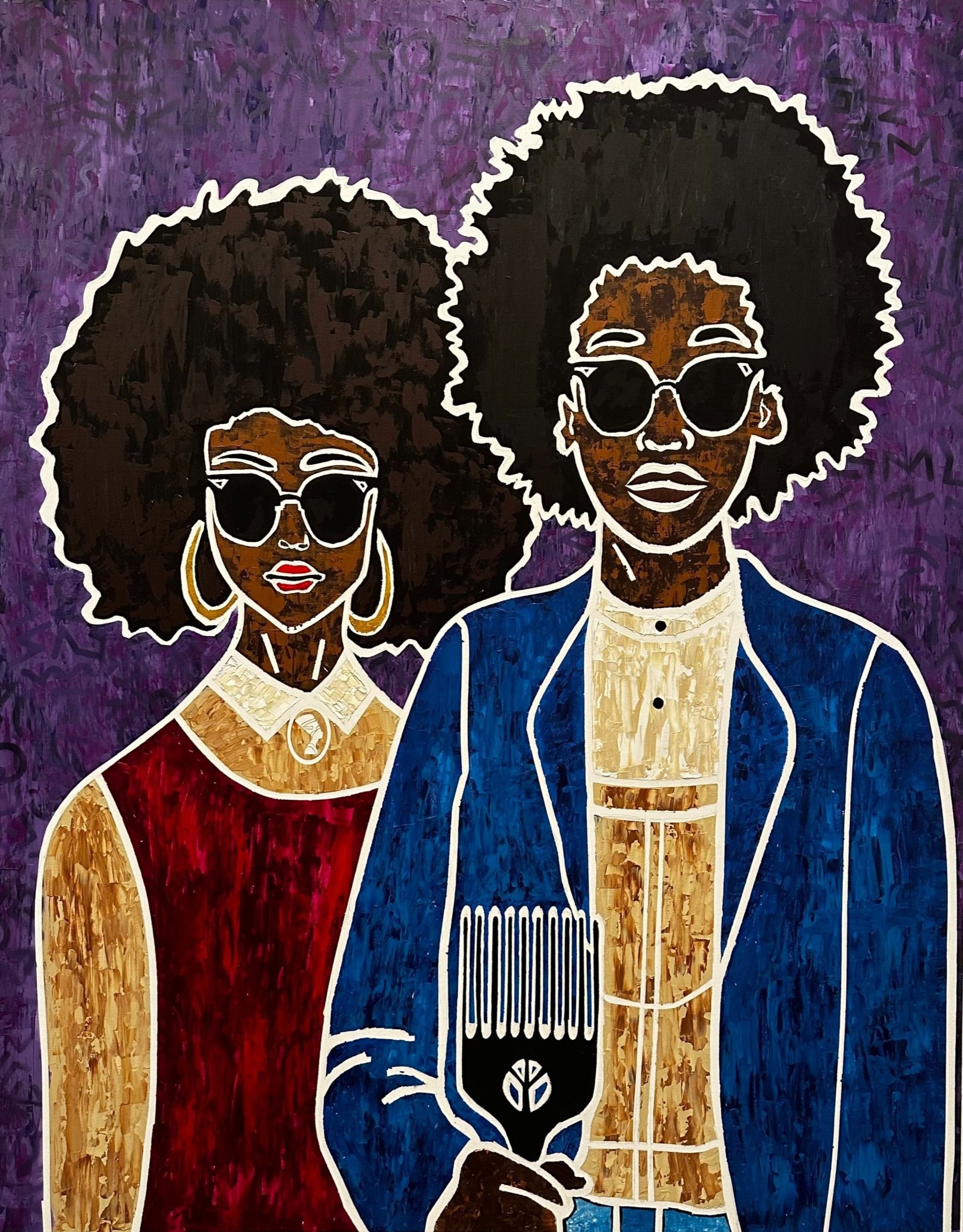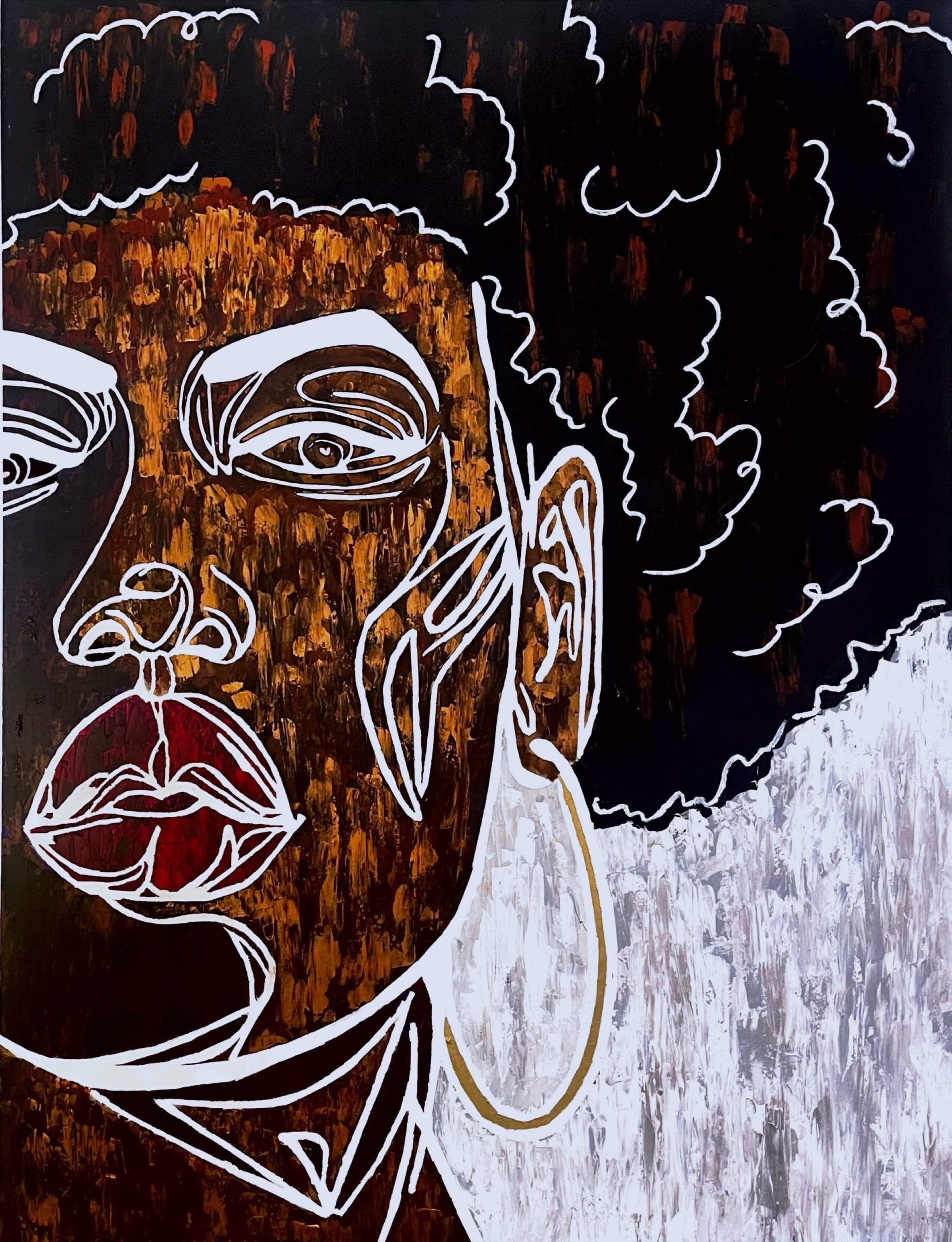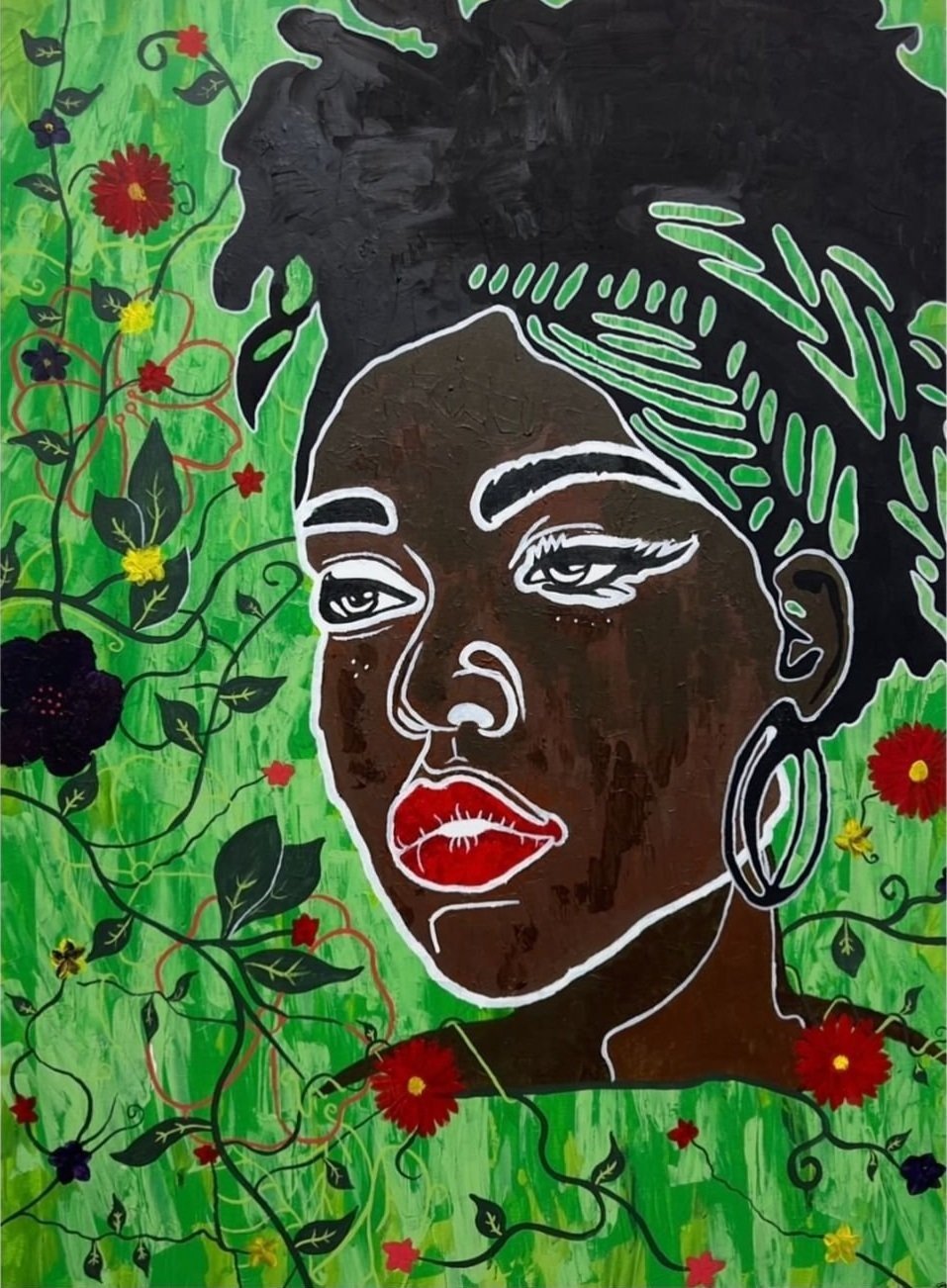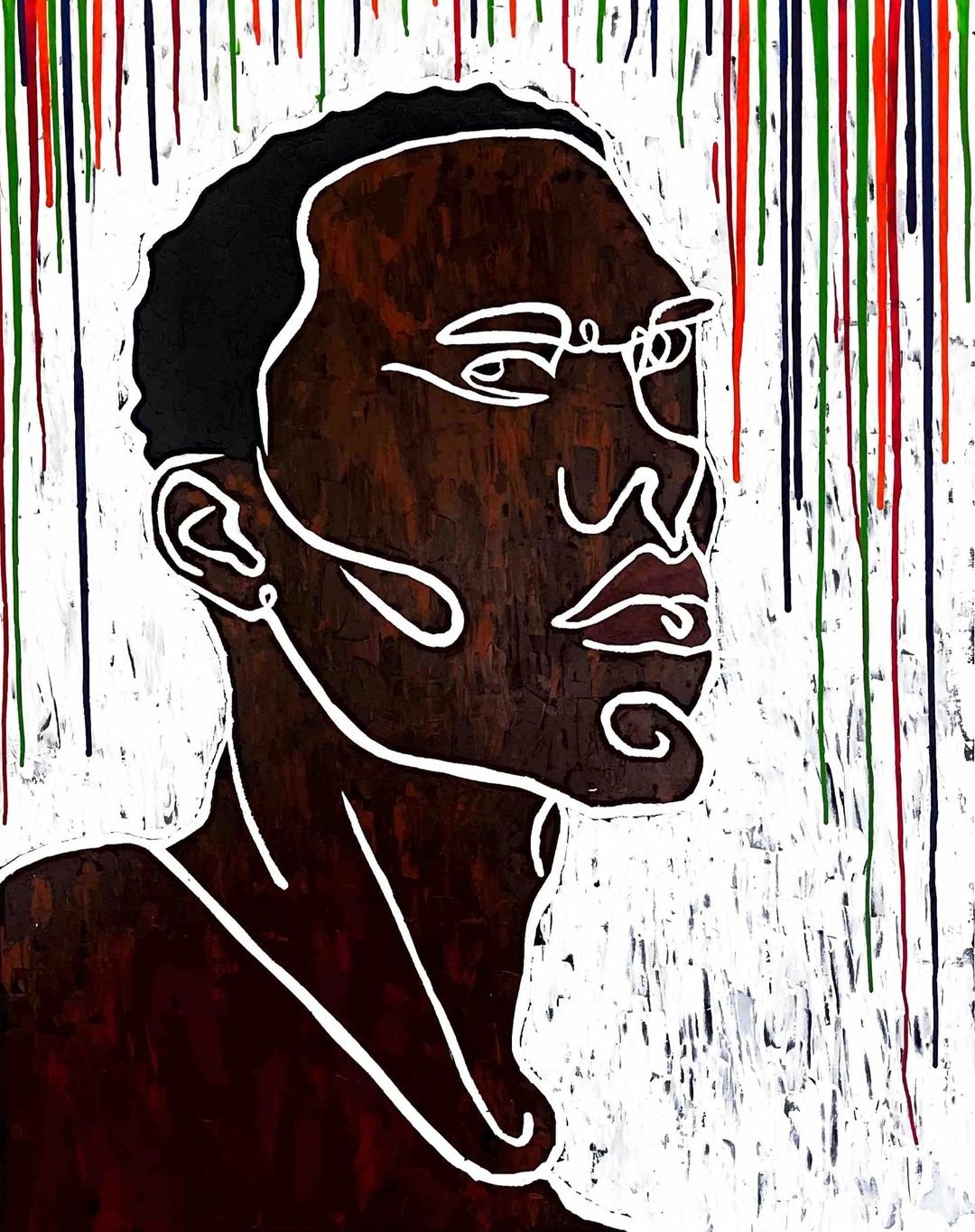Artist in conversation: Ray Levante
“ It's not just about telling a story; it's about inviting the audience to feel and interpret, fostering a dynamic connection between the artwork and the observer.”
Introducing Ray Levante, an emerging artist and digital marketing professional who skillfully merges visual communication with strategic insight. As an acrylic painter, Ray specializes in crafting captivating cultural narratives that add depth and vibrancy to the stories of womanhood, manhood, black culture, and indigenous heritage.
His signature style is celebrated for its ability to weave these narratives into a rich tapestry that resonates with viewers. Each piece is more than just a painting; it's a conversation starter, a thought-provoker, and a testament to the power of art as a tool for cultural storytelling.
In a world where digital marketing and artistry intersect, Ray stands out. He uses his strategic insight to create pieces that are not only visually appealing but also carry a meaningful message. His work is a testament to his belief that art can be a powerful vehicle for change, fostering understanding, and bridging cultural gaps.
What initially inspired you to become an artist, and how did you develop your unique style?
In high school, a dedicated art teacher played a pivotal role in opening up my creative perspective. From a young age, I displayed a natural inclination for creativity, often decorating the house for Christmas or Halloween with a wild imagination. However, it was my teacher's amazing artwork that truly inspired me. Her guidance demonstrated that I, too, could excel in art. During the initial stages of the COVID pandemic, when indoor activities became essential, I delved into art through YouTube videos. The work of painter John Beckley, known for his vibrant colors and abstract designs, captivated me and ignited a renewed focus on my artistic talents. Painting became a meditative activity, helping me combat procrastination and maintain concentration. As I explored my style, I aimed to create a recognizable signature with distinctive white lines, using them to shape and define the images in my paintings.
In terms of subject matter, what themes or motifs do you frequently explore in your work, and what draws you to these topics?
One of the central themes that I delve into extensively in my artwork is the rich tapestry of black culture, along with nuanced explorations of womanhood and manhood. I employ a distinctive technique of using white lines to meticulously craft images, contributing to the depth and expression of my artistic narratives. By focusing on these themes, I aim to evoke thought, promote dialogue, and celebrate the diversity and complexity of black culture, as well as the unique experiences of women and men. This deliberate choice of subject matter and technique is a conscious effort to engage viewers and prompt them to reflect on the multifaceted aspects of identity and societal dynamics.
Can you discuss the techniques and mediums you use in your mixed media pieces? How do these choices contribute to the overall message of your art?
My artistic process begins with crafting the initial design on Photoshop, allowing me to refine and perfect the digital representation. Subsequently, I choose between two methods to transfer the design onto the canvas: either cutting the design from vinyl and carefully placing it on the canvas or utilizing a projector to project and trace the design. The next phase involves employing a paint knife to fill the spaces, creating layered textures with a spectrum of colors.
If vinyl is used, I delicately peel it back, revealing the underlying design, and proceed to refine the white lines. Alternatively, when the design is directly drawn on the canvas, I use white paint to meticulously trace over the sketch, creating fine, defining lines. Once the canvas is entirely covered and the design is perfected, I attend to the finishing details, cleaning up the borders for a polished look. The artwork is then left to dry, completing the intricate and multilayered process that defines my mixed media pieces.
Looking back on your career, are there specific moments or achievements that you consider as milestones? How have these milestones shaped your artistic journey?
Undoubtedly, a significant milestone in my artistic journey occurred when I organized my inaugural art show at a friend's restaurant. This experience marked a turning point as I showcased my work to a wider audience. The response was truly gratifying, with the sale of four paintings amounting to approximately $4500 within the first week of the exhibition. This not only validated my dedication to honing my craft but also underscored the resonance of my art with the audience. The success of this show has since become a pivotal moment that continues to shape and motivate my ongoing artistic endeavors.
In your opinion, what role does art play in society, and how do you see your own contributions impacting the cultural or social landscape?
I perceive my art as a substantial contributor to the community, particularly in its emphasis on portraying and celebrating black culture. Through my artwork, I aim to weave narratives that resonate with the younger generation, offering them a visual storytelling experience that reflects the richness and diversity of their cultural heritage.
Moreover, my art serves as a source of inspiration for individuals who harbor aspirations but may be uncertain about how to embark on their journeys. It acts as a testament that the first step toward realizing one's goals is simply to begin. By portraying stories and experiences through my artistic lens, I hope to instill a sense of empowerment and motivation, encouraging others to overcome obstacles and pursue their passions with conviction.
How do you incorporate feedback from critics and audiences into your artistic practice, and how do you balance this feedback with your own artistic intuition?
I value feedback tremendously because it allows me to view my work from different perspectives. When someone suggests an idea that I believe could enhance the overall impact of my art, I'm open to incorporating those changes, recognizing the value in collaborative insights.
Equally important, if there's feedback with which I may initially disagree, I still appreciate taking the time to understand the perspective it stems from. This openness to critique is vital in ensuring that my art aligns with a broader audience, meeting diverse needs and resonating with varied perspectives. By navigating this feedback process, I continuously strive to refine and evolve my artistic expression to create work that resonates with a wider audience.
How do you stay motivated and inspired despite any setbacks or creative blocks you may encounter?
Honestly, creative blocks are a common challenge in my artistic process. I've found that immersing myself in the right environment can help overcome these hurdles. Whether it's the rhythmic flow of music that keeps me in the zone or watching a movie that aligns with the design I'm working on, these external stimuli serve as catalysts to reignite my creative spark.
By engaging with different forms of media, I can tap into new perspectives, themes, and emotions that often break down mental barriers and inspire fresh ideas. This adaptive approach not only helps me navigate creative blocks but also adds a dynamic layer to my artistic process, fostering innovation and resilience in the face of challenges.
How do you feel about exhibiting your artworks with The Holy Art Gallery?
The prospect of showcasing my work at The Holy Art Gallery fills me with immense excitement and anticipation. The gallery's prestigious reputation, coupled with the vibrant art scenes of both San Francisco and the opportunity to extend my reach to New York City, adds an extra layer of enthusiasm to this endeavor.
Exhibiting in such prominent locations not only provides a platform for my art to reach diverse audiences but also allows me to immerse myself in the dynamic art culture of these iconic cities. The anticipation of sharing my creations in these influential spaces fuels my passion and commitment to contributing to the artistic dialogue on a broader scale.
Looking ahead, what are your long-term goals and aspirations as an artist, and how do you plan to achieve them?
As I gaze into the future, my overarching objective is to curate both solo and group exhibitions, acting as a platform not only for my own artistic journey but also for other emerging artists. By orchestrating these showcases, I aspire to carve out a meaningful space for creativity, fostering connections and opportunities that pave the way for a collective artistic trajectory.
Looking further ahead, my ultimate ambition is to exhibit my solo work in a prestigious museum —a platform that transcends geographical boundaries. The dream is to have my art on display, captivating audiences from all corners of the globe. This aspiration represents not just a personal milestone but a commitment to contributing to the global artistic tapestry, leaving a lasting impact on the cultural landscape.
What role does emotion play in your creative process, and and how do you aim to evoke specific feelings or reactions from those who view your drawings?
Emotion is the heartbeat of my artistic expression. Each brushstroke and color choice in my paintings is a deliberate effort to convey the rich stories of black history, immersing viewers in narratives that transcend time and space. Whether it's capturing the intensity of historical moments or evoking the tender familiarity of a stern-faced lady reminiscent of one's own mother, my aim is to provoke a visceral emotional response.
The true essence of my art lies in the reactions it elicits from viewers. I strive to create a visual experience that resonates on a profound emotional level, encouraging individuals to explore a spectrum of feelings as they engage with my paintings. It's not just about telling a story; it's about inviting the audience to feel and interpret, fostering a dynamic connection between the artwork and the observer.







